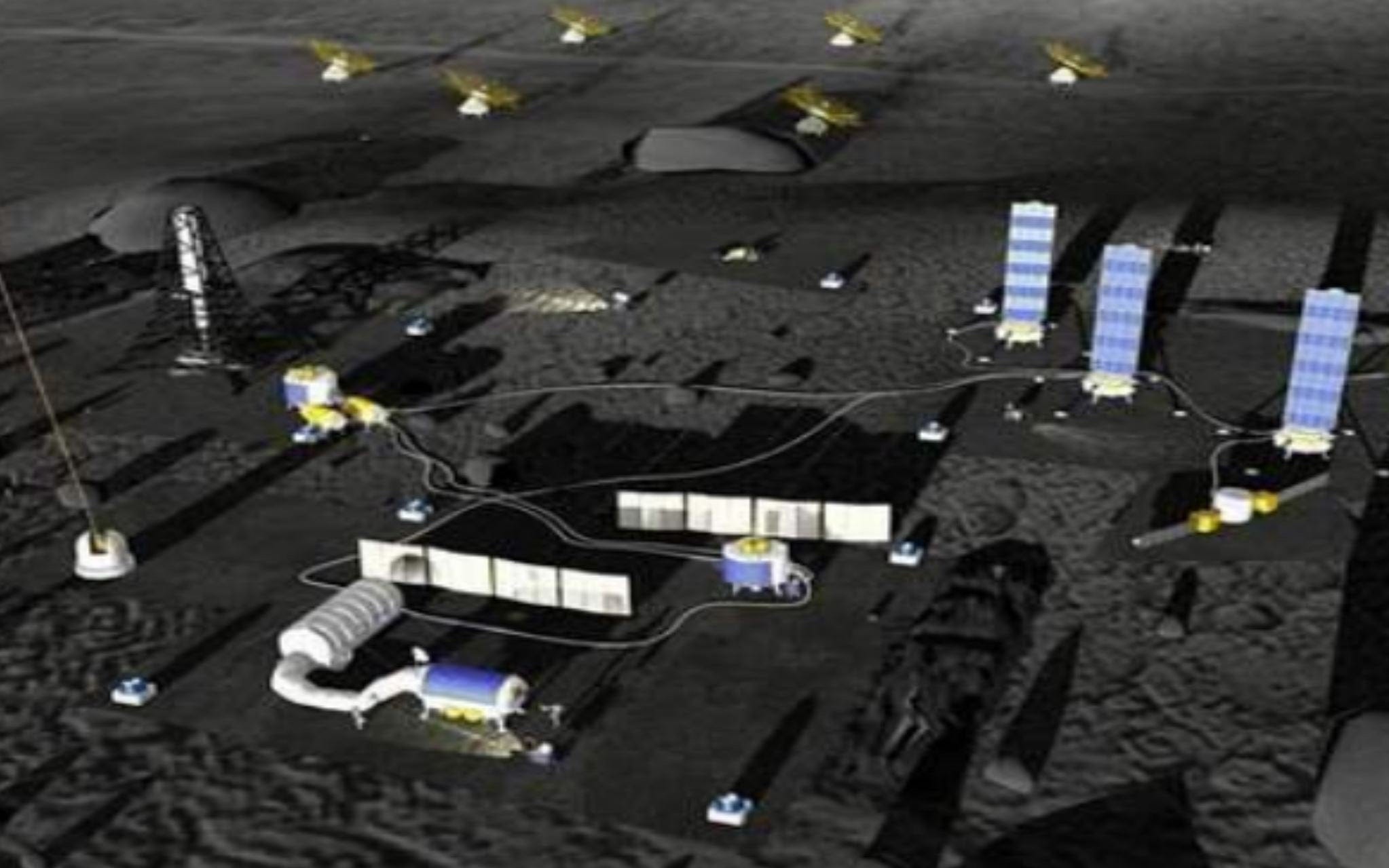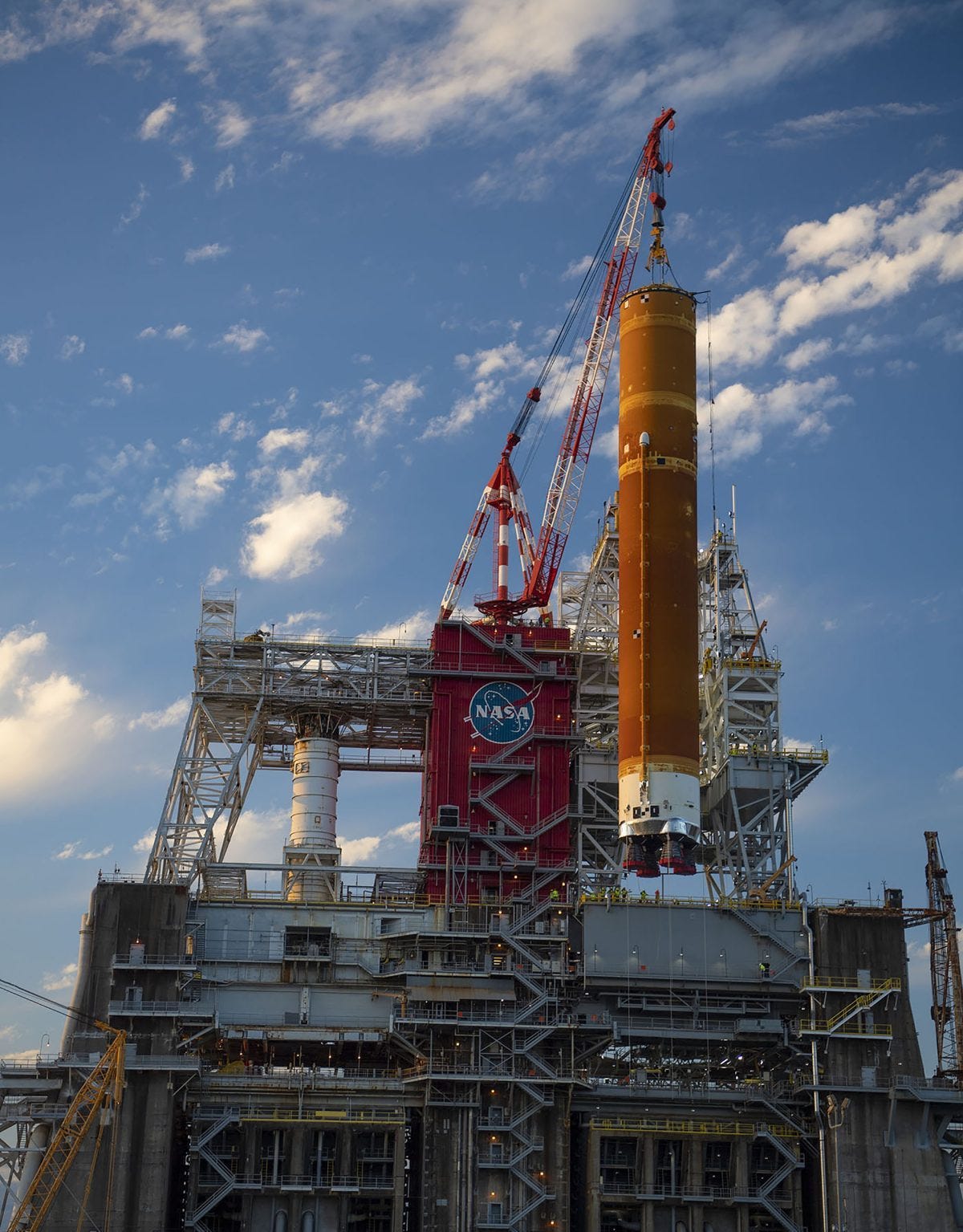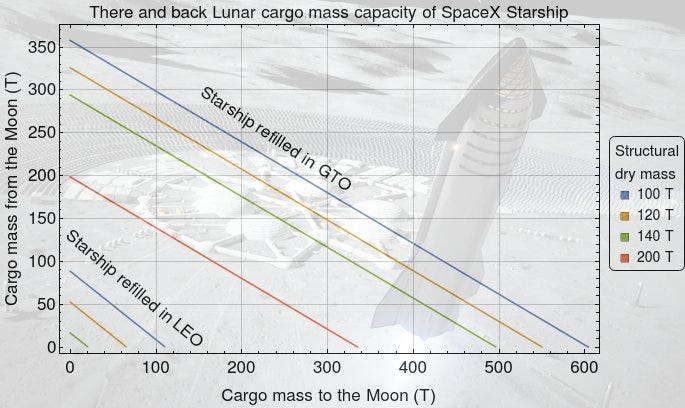Moon Monday Issue #24
Details on Chinese-Russian Moon base, stepping stones to lunar resources, SpaceX Starship in context, Germany to send radiation detectors to the Moon, and more developments in the lunar space.
Highlight
More details have emerged on the Russian-Chinese lunar science base on the Moon’s south pole. First, both the agencies issue an official joint statement for the project that reads:
Taking into account the experience of the Russian Federation and the People's Republic of China in the field of space science, the creation and use of space systems and space technologies, recognizing the mutual interest in the creation of the International Scientific Lunar Station (ISLS), guided by the legislation of their states, generally recognized principles and norms of international law, international treaties, of which their states are participants, and to cooperate on the principles of equality, openness and honesty, hereby jointly publish a statement on cooperation in the field of creating the ISLS.
China has been referring to the base as the “International Lunar Research Station (ILRS)” thus far so we’ll have to wait and see if the named has changed to ISLS or not. The lunar base is intended to be a long-term facility for Moon exploration, astronomical observations, fundamental physics experiments, and technology demonstrations. China and Russia both emphasize that international partners are welcome in any aspect of the base at any stage. Wu Yanhua, deputy head of the Chinese Space Agency, said to the Global Times that the ILRS will be another major contribution from China and Russia to promote sustainable development of UN outer space activities.

Next, per slides posted on Chinese social media, data from missions launched by 2025 by both space agencies will help choose the base’s location on the Moon’s south pole. These missions include China’s Chang’e 6 and 7, and Russia’s Luna 25, 26 and 27 missions. Chang’e 6––carrying instruments from France, Sweden, Russia and Italy––will launch in 2024 to bring samples from the South Pole-Aitken basin on the Moon’s farside, a feature of immense scientific importance. Chang’e 7, carrying a total of 23 instruments, will consist of an orbiter and a lander. The lander will deploy a rover and a mini-flying probe to survey the environment and resources in permanently shadowed regions on the Moon’s south pole.
Between 2026-2030, Chang’e 8 and Luna 28 will land at the selected site to begin construction/deployment of the robotic base. Next, multiple missions across 2030-2035 will focus on expanding the base and increasing autonomous operations. Once China’s super heavy-lift rocket Long March 9, comparable to the Saturn V, is ready to fly in the first half of the 2030s, they’ll send astronauts and establish a long-term human presence by 2045.
Related: China has been envisaging some future Moon exploration concepts like a versatile lunar rover for astronauts, and a sky-ladder-based payload delivery system.
Exploration
NASA is now shipping the SLS rocket core stage to their Kennedy Space Center in Florida to prepare it for its first launch with the Artemis I mission, which will see an uncrewed Orion spacecraft go around the Moon and return to Earth. Meanwhile, NASA is manufacturing core stages of the next SLS rockets to be used for crewed missions at the agency’s Michoud Assembly 43-acre Facility. The core stage for the Artemis II mission is more than halfway done whereas welding of parts for Artemis III began recently. Work on the core stage for Artemis IV will begin next month.

ISECG, a forum of space agencies from around the world, has released their ISRU Gap Assessment Report. The space industry in general agrees that In-Situ Resources Utilization, or ISRU, will be transformative for space exploration as a whole, making large crewed and robotic missions not only possible but sustainable. With ISRU, we could extract and utilize the water on the Moon’s poles for fuel and consumptions needs, and use lunar regolith to extract metals for manufacturing as well as to provide shielding material for lunar bases. These supplies would otherwise have to be dragged out of Earth every time. In their extensive report, ISECG identifies key gaps we need to fill before we can enjoy an ISRU-enabled future. Here are some of the key takeaways.
- We will benefit from developing lunar ISRU since a lot of the technologies and operational knowledge can be adapted for human exploration of Mars.
- The currently available Moon soil simulants are not adequate for development and testing of ISRU systems. We need higher fidelity simulants, and more quantities of them, especially for the distinct nature of regolith at the lunar poles. Related: Planetary Simulant Database
- We need to understand the nature of water and volatiles on the lunar poles and permanently shadowed regions, especially in terms of their subsurface availability which is a black box at the moment. While NASA’s VIPER and the Japanese-Indian LUPEX rovers aim to map polar resources and determine its nature, the report calls for a more focused and coordinated international effort because of the invaluable starting point such information would enable.
- We should engage with terrestrial mining groups to learn and adapt from their innovations in remote operations under harsh conditions.
- Because long-term, sustained operations will require a continuous flow of missions to the same location, analyzing how rocket plumes interact with the surface and damage nearby hardware is essential for us to be able to mitigate it. The report suggests development work on landing/ascent pads must begin now, and be built into early human mission plans before building bases and complexes. Related: A White Paper submitted to the Planetary Science Decadal Survey 2023-2032 summarizing our current knowledge on the subject.
- Apollo missions have indicated that lunar regolith presents significant risks to hardware for long-term surface operations. Therefore, understanding lunar dust properties and developing technologies to mitigate those are highly recommended too for ISRU hardware to function long-term.
If you think NASA selecting SpaceX Starship to land astronauts on the Moon happened too fast to contemplate its implications, you’re not alone. Here are some nice articles that put Starship’s selection in context in different ways.
- As more people hear about Starship sending astronauts to the Moon, here’s a great overview by The Planetary Society that you can pass on to get anyone up to speed on the why, how and what behind the decision.
- A nice op-ed by Wayne Eleazer, a U.S. Air Force veteran, putting Starship in historical context with respect to NASA’s human space exploration programs.
- A detailed look at Starship’s payload capacity by Casey Handmer for the different scenarios of crewed flights, cargo transport to and from the Moon, and expendable cargo mission for when we want to deploy giant Moonbases in one go. My favorite pick? Send a payload empty Starship and bring back about 40,000 kilograms of Moon rocks. Yes, let’s do this. For context, Apollo missions brought back about 382 kilograms worth of lunar samples.
- An accessible piece by Eric Berger explaining how NASA’s bold bet on Starship may fundamentally change how the agency explores space.

Science
The German Space Agency (DLR) is buying a payload slot for putting a radiation detector onboard Astrobotic’s first Moon landing mission in late 2021, which will take data both during the cruise phase of the mission and when on the lunar surface. This radiation detector is identical to the 16 DLR-provided detectors on the Artemis I flight around the Moon, which are integrated into dummies onboard the Orion spacecraft to measure radiation exposure to future crew. The DLR sensor will be operated from Germany, with commands and data going to and from the Moon via Astrobotic’s Mission Control in the US.
Scientists are trying to nail down exactly where the water ice and other volatiles in permanently shadowed regions on the Moon’s poles came from. A new study looks at the potential of the Moon’s vicious volcanic sources i.e. if gases emitted during the Moon’s most volcanically active period could form temporary atmospheres, which could allow volatiles to end up in permanently shadowed regions on the poles and get trapped. Their results find that volcanically produced atmospheres are inefficient at delivering volatiles to the lunar poles, meaning asteroid and cometary impacts seem to be the major source.
Share the Moon
Do you enjoy reading Moon Monday? If you think a friend, colleague, or a fellow lunatic would like it too, please take a moment to share my newsletter with them. 🚀
Thank you SWISSAPOLLO and Epsilon3 for supporting me and powering this edition of Moon Monday.
Everyone, I’m publishing this one-of-a-kind Moon exploration newsletter for free, with no ads. And it will stay that way. If you like my work, support me to keep it going. Monthly supporters will be credited in future Moon Monday issues with a link to their website/social.
